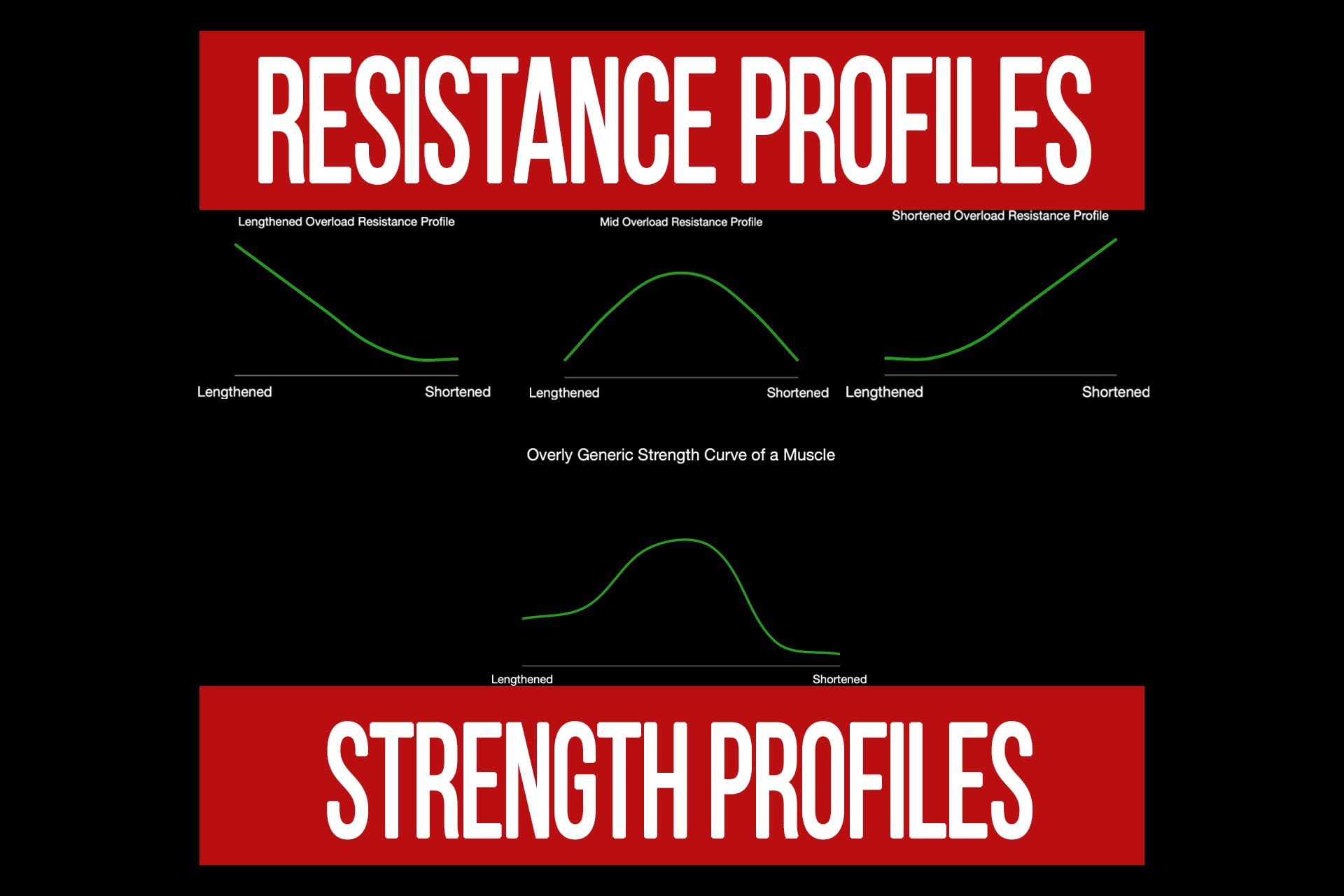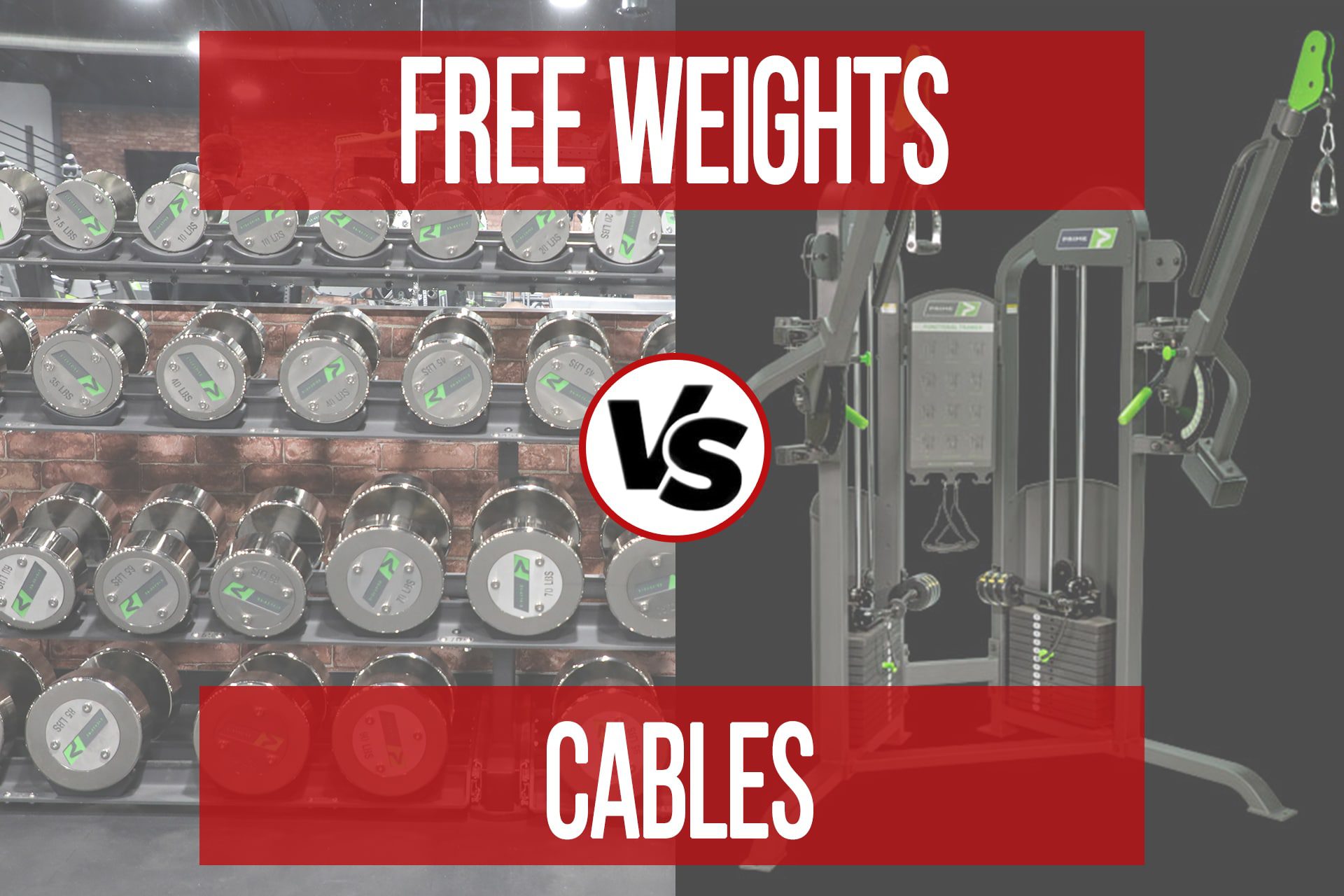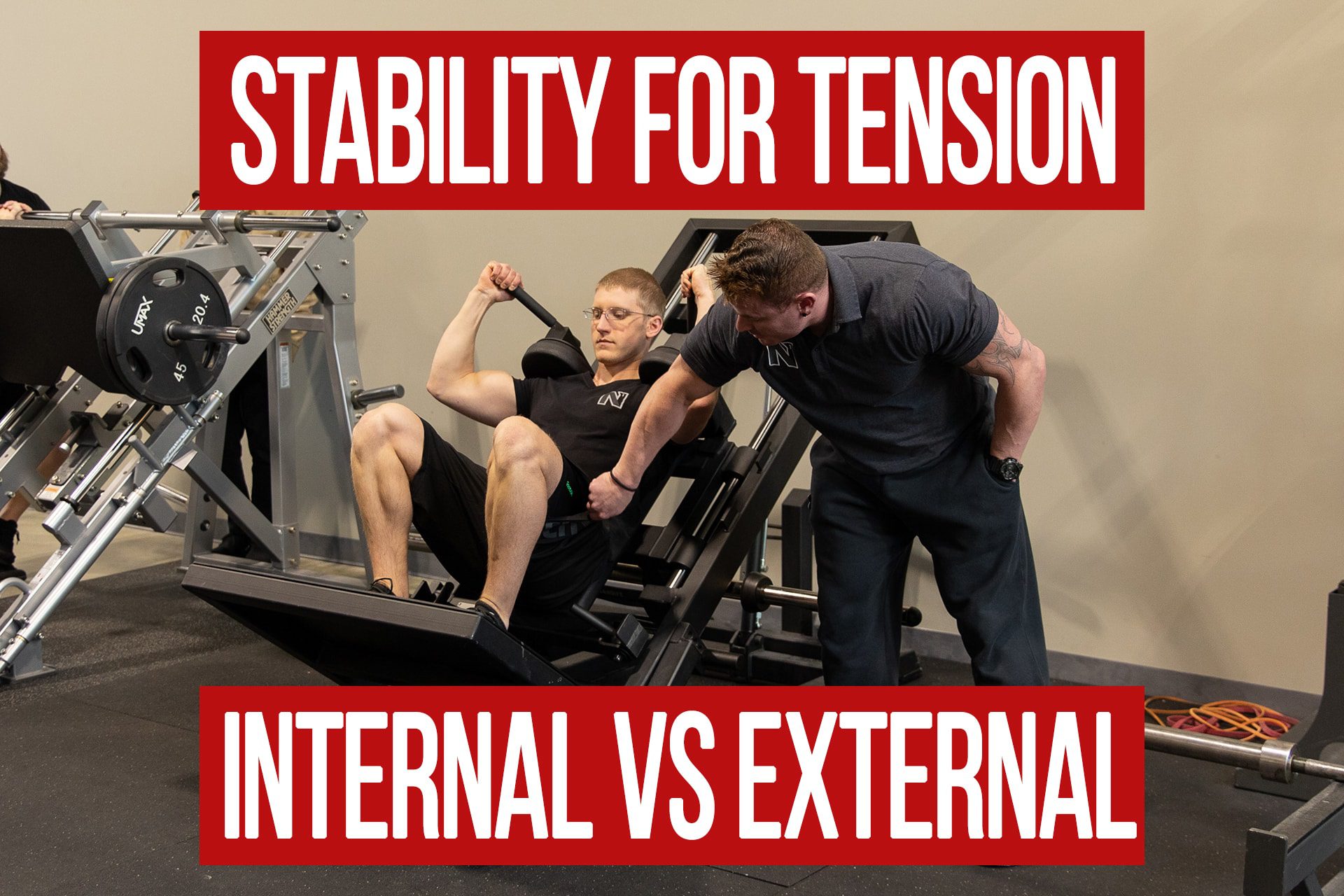Machines VS Free Weights Comparison
n1 training
Machines VS Free Weight Exercises
The age-old debate of “machines versus free weights” is flawed, and I’ll tell you why.
Context.
Characteristics that may be portrayed as a benefit in one situation may be a detriment (or at least less favorable) in another.
Let’s break down the comparison to uncover the trade-offs between these two categories of exercises. From there, you’ll be better equipped to determine when to apply one or the other.
For the purposes of this article, cables will be grouped with dumbbells and barbells in the “Free Weight” category.
For the abbreviated version, skip to the Key Points in each section and the final Summary.
Comparison #1: Setup
Machines
Machines have a fixed path of motion which means there are fewer options for setting up in the exercise. This can be great for newer trainees who will have less adjustment options to worry about. However, with fewer options for adjustment comes the trade-off of most machines not perfectly fitting every person. If you’re on the extreme ends of human proportions, many machines may not fit well or at least not through the entire range of motion.
Some machines may allow you to perform exercises that don’t have directly equivalent free weight options and do a better job of biasing some tissues without taxing others. Leg extension, leg curls, leg press, hack squats are a few examples.
Some machines are trash. There’s no nice way to put it. Just because it exists in a gym does not mean it is a great tool to train what is on the sticker with the pretty picture of a highlighted muscle. Having a basic understanding of anatomy can help a gym goer or trainer discern what machines may be more useful than others, and avoid wasting time trying to set up in a machine that was just poorly designed.
Key Point: While setting up may be simpler, the fixed path of the machine may not ideally fit the path of motion needed to train the target muscle through the entire range of the movement, or may not fit the individual well at all.
Free Weights
Free weights offer greater freedom to fit exercises to the individual. The setup, path of motion, and range of motion can be completely individualized. A dumbbell press can work for any structure or size of person for multiple exercise options. Anyone can set up to train a number of muscle groups and exercises for each with a cable.
The tremendous freedom can also be a trade-off for someone who doesn’t know how to set up an exercise very well for what they want to train. It also offers many opportunities to improperly set up exercises which can reduce the effectiveness or even cause discomfort in some cases.
Key Point: There is more education required to become proficient at setting up many exercises with free weights.
Comparison #2: Coordination & Compensation
Machines
The fixed paths and greater external stability from machines reduces the maximum demand for muscular coordination to complete the movement. As long as the cumulative force of the individual exceeds the resistance, the machine will move. This means that for someone who is less coordinated, they can even be pushing/pulling out of alignment with the machine’s path and still “do the exercise”.
The drawback from a trainer’s perspective is that it might “look correct” even if they’re predominantly using other muscles that would otherwise move in a different direction. For example, in a chest press machine you can move the handles by just trying to extend your elbows and utilizing little recruitment of the pecs. Because the handle path is fixed, it ends up moving in a “chest” path. More stimulus is going to other muscle groups but it can be visually hard to tell when observing.
This can allow training of poor motor patterns that will limit the ability to stimulate target muscles. However, it can also aid those learning new movements to understand what the ideal path of movement should be, since it forces them through a specific range (if set up correctly).
Key Point: Less coordination is required, but can also allow or encourage more compensation from less-advanced individuals which can detract from an intended stimulus on specific tissue. Once the correct motor patterns have been learned, the lower demand on coordination can work in your favor.
Free Weights
Free weights will move exactly how you act on them. Whatever direction you push/pull is the way they will go. It is much easier to see if an exercise is being executed properly for a particular muscle or if compensation is occurring, based on how the individual moves.
Using free weights places a greater demand on stabilizing muscles, which carries over to other exercises. The skill of coordinating these stabilizers with the primary movers is a valuable athletic skill and can help reduce risk of injury in both training and everyday activity.
There is the ability to add compensation via “body english” in some free weight exercises (like swinging your torso when you curl). As long as you’re training with control and not slinging weights like a dork, this is less of an issue for most people and is really just a matter of discipline.
Key Point: Free weights do not allow for as much compensation and require greater coordination to execute. It can be easier to visually detect improper setup or execution compared to a fixed machine. There are also the added benefits of strengthening stabilizing muscle groups and learning the muscular coordination component.
Comparison #3: Resistance Profiles
Machines
Some machines can accomplish resistance profiles that just aren’t possible with cables, dumbbells, or barbells. The levers and cams of machines dictate what portion of the rep is most and least challenging, but most machines have only a single resistance profile. This is one of the reasons we are big fans of the Prime Fitness equipment which allows you to manipulate the resistance profile of each machine for a variety of training options.
Free Weights
With free weights, your limbs are the levers that dictate the resistance profile of an exercise. You can manipulate them to a degree using changes in the setup or concentric intent, but this is very limited.
The majority of your dumbbell/barbell pressing movements will be overloaded near the lengthened position while your pulling movements will be overloaded near the shortened position.
Cables give you a little more ability to manipulate what portion of the rep is hardest.
For a full comparison on dumbbells and barbells versus cables, read THIS ARTICLE
Comparison #4: Output
The added stability from machines can allow maximal effort to be put into exercises with less limitation by coordination or stabilizing muscle groups. Or, if someone is less proficient at their execution with the target tissue, the fixed path of the machine may help them work deeper into fatigue without significant breakdown to their execution, compared to the free weight alternative.
The added stability is one argument used in favor of machines over free weight exercises for hypertrophy.
However…
When set up correctly, and with adequate motor pattern proficiency, free weight exercises may not significantly limit output compared to free weights in all cases. If the target tissue fails first, before coordination or synergist/stabilizer muscle groups do, that is the most you can get out of that tissue. At that point, free weight options may be preferred due to the ability to more precisely manipulate the setup for the target tissue if you don’t have a machine that fits you suitably.
Summary:
There is no reason (other than equipment availability) to limit yourself to exclusively either machines or free weights. Both have merit and useful applications based on the client, goal stimulus, and program design.
The freedom of setup with free weights can allow better specificity for training tissues, but also requires more knowledge on making adjustments, compared to machines.
Some resistance profiles are more easily accomplished with either free weights or machines, depending on what you want and what equipment you have available.
Machines can allow for greater output if stability or coordination are limiting factors in a movement, but it can also be more difficult to spot compensation than lead to poor motor patterns which can limit the stimulus for the target tissue.
An option to take advantage of the benefits of both types of exercises can be to utilize free weights for the advantages of more precise setup and learning motor patterns, then using machines when you need to train to a greater degree of fatigue or when they offer a quality (like a resistance profile) that may not be available with free weights.
The age-old debate of “machines versus free weights” is flawed, and I’ll tell you why.
Context.
Characteristics that may be portrayed as a benefit in one situation may be a detriment (or at least less favorable) in another.
Let’s break down the comparison to uncover the trade-offs between these two categories of exercises. From there, you’ll be better equipped to determine when to apply one or the other.
For the purposes of this article, cables will be grouped with dumbbells and barbells in the “Free Weight” category.
For the abbreviated version, skip to the Key Points in each section and the final Summary.
Comparison #1: Setup
Machines
Machines have a fixed path of motion which means there are fewer options for setting up in the exercise. This can be great for newer trainees who will have less adjustment options to worry about. However, with fewer options for adjustment comes the trade-off of most machines not perfectly fitting every person. If you’re on the extreme ends of human proportions, many machines may not fit well or at least not through the entire range of motion.
Some machines may allow you to perform exercises that don’t have directly equivalent free weight options and do a better job of biasing some tissues without taxing others. Leg extension, leg curls, leg press, hack squats are a few examples.
Some machines are trash. There’s no nice way to put it. Just because it exists in a gym does not mean it is a great tool to train what is on the sticker with the pretty picture of a highlighted muscle. Having a basic understanding of anatomy can help a gym goer or trainer discern what machines may be more useful than others, and avoid wasting time trying to set up in a machine that was just poorly designed.
Key Point: While setting up may be simpler, the fixed path of the machine may not ideally fit the path of motion needed to train the target muscle through the entire range of the movement, or may not fit the individual well at all.
Free Weights
Free weights offer greater freedom to fit exercises to the individual. The setup, path of motion, and range of motion can be completely individualized. A dumbbell press can work for any structure or size of person for multiple exercise options. Anyone can set up to train a number of muscle groups and exercises for each with a cable.
The tremendous freedom can also be a trade-off for someone who doesn’t know how to set up an exercise very well for what they want to train. It also offers many opportunities to improperly set up exercises which can reduce the effectiveness or even cause discomfort in some cases.
Key Point: There is more education required to become proficient at setting up many exercises with free weights.
Comparison #2: Coordination & Compensation
Machines
The fixed paths and greater external stability from machines reduces the maximum demand for muscular coordination to complete the movement. As long as the cumulative force of the individual exceeds the resistance, the machine will move. This means that for someone who is less coordinated, they can even be pushing/pulling out of alignment with the machine’s path and still “do the exercise”.
The drawback from a trainer’s perspective is that it might “look correct” even if they’re predominantly using other muscles that would otherwise move in a different direction. For example, in a chest press machine you can move the handles by just trying to extend your elbows and utilizing little recruitment of the pecs. Because the handle path is fixed, it ends up moving in a “chest” path. More stimulus is going to other muscle groups but it can be visually hard to tell when observing.
This can allow training of poor motor patterns that will limit the ability to stimulate target muscles. However, it can also aid those learning new movements to understand what the ideal path of movement should be, since it forces them through a specific range (if set up correctly).
Key Point: Less coordination is required, but can also allow or encourage more compensation from less-advanced individuals which can detract from an intended stimulus on specific tissue. Once the correct motor patterns have been learned, the lower demand on coordination can work in your favor.
Free Weights
Free weights will move exactly how you act on them. Whatever direction you push/pull is the way they will go. It is much easier to see if an exercise is being executed properly for a particular muscle or if compensation is occurring, based on how the individual moves.
Using free weights places a greater demand on stabilizing muscles, which carries over to other exercises. The skill of coordinating these stabilizers with the primary movers is a valuable athletic skill and can help reduce risk of injury in both training and everyday activity.
There is the ability to add compensation via “body english” in some free weight exercises (like swinging your torso when you curl). As long as you’re training with control and not slinging weights like a dork, this is less of an issue for most people and is really just a matter of discipline.
Key Point: Free weights do not allow for as much compensation and require greater coordination to execute. It can be easier to visually detect improper setup or execution compared to a fixed machine. There are also the added benefits of strengthening stabilizing muscle groups and learning the muscular coordination component.
Comparison #3: Resistance Profiles
Machines
Some machines can accomplish resistance profiles that just aren’t possible with cables, dumbbells, or barbells. The levers and cams of machines dictate what portion of the rep is most and least challenging, but most machines have only a single resistance profile. This is one of the reasons we are big fans of the Prime Fitness equipment which allows you to manipulate the resistance profile of each machine for a variety of training options.
Free Weights
With free weights, your limbs are the levers that dictate the resistance profile of an exercise. You can manipulate them to a degree using changes in the setup or concentric intent, but this is very limited.
The majority of your dumbbell/barbell pressing movements will be overloaded near the lengthened position while your pulling movements will be overloaded near the shortened position.
Cables give you a little more ability to manipulate what portion of the rep is hardest.
For a full comparison on dumbbells and barbells versus cables, read THIS ARTICLE
Comparison #4: Output
The added stability from machines can allow maximal effort to be put into exercises with less limitation by coordination or stabilizing muscle groups. Or, if someone is less proficient at their execution with the target tissue, the fixed path of the machine may help them work deeper into fatigue without significant breakdown to their execution, compared to the free weight alternative.
The added stability is one argument used in favor of machines over free weight exercises for hypertrophy.
However…
When set up correctly, and with adequate motor pattern proficiency, free weight exercises may not significantly limit output compared to free weights in all cases. If the target tissue fails first, before coordination or synergist/stabilizer muscle groups do, that is the most you can get out of that tissue. At that point, free weight options may be preferred due to the ability to more precisely manipulate the setup for the target tissue if you don’t have a machine that fits you suitably.
Summary
There is no reason (other than equipment availability) to limit yourself to exclusively either machines or free weights. Both have merit and useful applications based on the client, goal stimulus, and program design.
The freedom of setup with free weights can allow better specificity for training tissues, but also requires more knowledge on making adjustments, compared to machines.
Some resistance profiles are more easily accomplished with either free weights or machines, depending on what you want and what equipment you have available.
Machines can allow for greater output if stability or coordination are limiting factors in a movement, but it can also be more difficult to spot compensation than lead to poor motor patterns which can limit the stimulus for the target tissue.
An option to take advantage of the benefits of both types of exercises can be to utilize free weights for the advantages of more precise setup and learning motor patterns, then using machines when you need to train to a greater degree of fatigue or when they offer a quality (like a resistance profile) that may not be available with free weights.
Intro to Resistance Profiles & Strength Profiles
videoAnatomy & Biomechanics Definition Foundation FREE SupportFree Weights VS Cables for Resistance Training
articleBiomechanics Foundation FREE Program Design Support TrainingThe Importance of Stability for Muscular Tension: Internal vs External
articleBiomechanics Definition Foundation FREE
Popular Pages
Learn & Train With Us
Add N1 Training to your Homescreen!

Please log in to access the menu.


